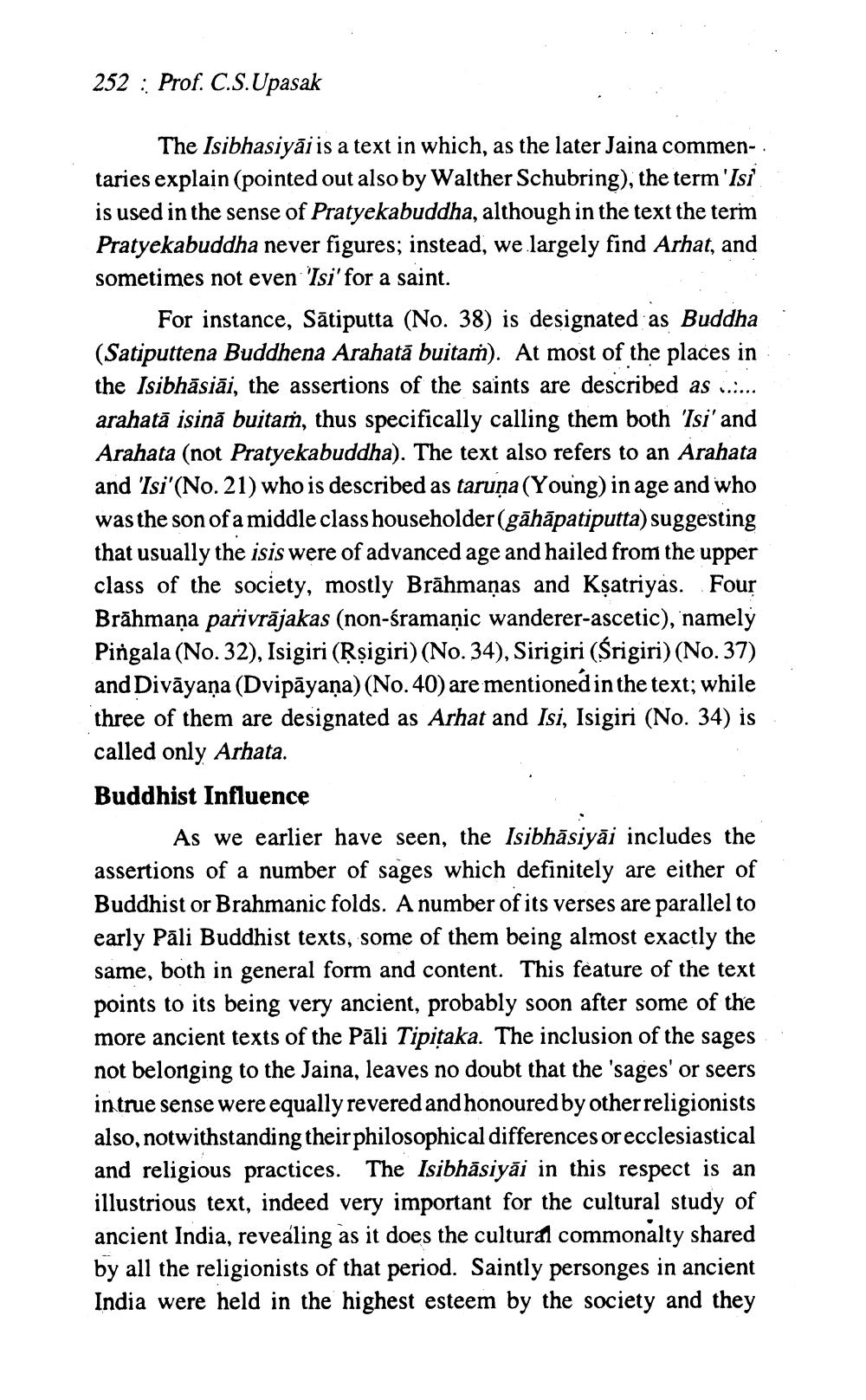________________ 252 : Prof. C.S. Upasak The Isibhasiyajis a text in which, as the later Jaina commen- . taries explain (pointed out also by Walther Schubring), the term 'Isi is used in the sense of Pratyekabuddha, although in the text the term Pratyekabuddha never figures; instead, we largely find Arhat, and sometimes not even "Isi' for a saint. For instance, Satiputta (No. 38) is designated as Buddha (Satiputtena Buddhena Arahata buitar). At most of the places in the Isibhasiai, the assertions of the saints are described as ...... arahata isina buitam, thus specifically calling them both 'Isi' and Arahata (not Pratyekabuddha). The text also refers to an Arahata and 'Isi'(No. 21) who is described as taruna (Young) in age and who was the son of a middle class householder (gahapatiputta) suggesting that usually the isis were of advanced age and hailed from the upper class of the society, mostly Brahmanas and Ksatriyas. Four Brahmana parivrajakas (non-sramanic wanderer-ascetic), namely Pingala (No. 32), Isigiri (Rsigiri) (No. 34), Sirigiri (Srigiri) (No. 37) and Divayana (Dvipayana) (No. 40) are mentioned in the text; while three of them are designated as Arhat and Isi, Isigiri (No. 34) is called only Arhata. Buddhist Influence As we earlier have seen, the Isibhasiyai includes the assertions of a number of sages which definitely are either of Buddhist or Brahmanic folds. A number of its verses are parallel to early Pali Buddhist texts, some of them being almost exactly the same, both in general form and content. This feature of the text points to its being very ancient, probably soon after some of the more ancient texts of the Pali Tipitaka. The inclusion of the sages not belonging to the Jaina, leaves no doubt that the 'sages' or seers intrue sense were equally revered and honoured by other religionists also, notwithstanding their philosophical differences or ecclesiastical and religious practices. The Isibhasiyai in this respect is an illustrious text, indeed very important for the cultural study of ancient India, revealing as it does the cultural commonalty shared by all the religionists of that period. Saintly personges in ancient India were held in the highest esteem by the society and they




